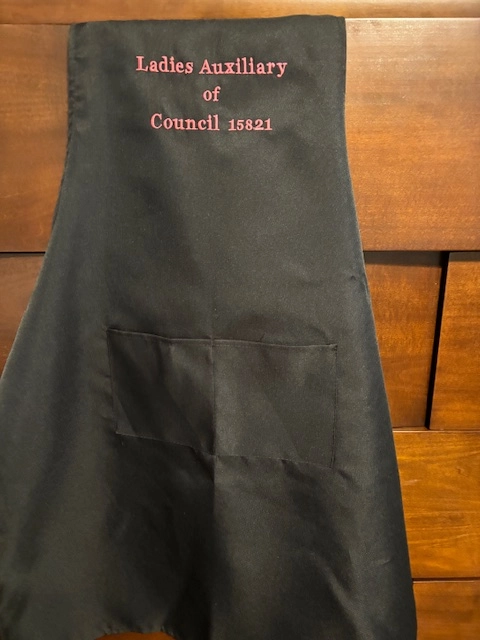The Art of Custom Embroidery: Opening the Keys to Creating Distinct and Unforgettable Styles
Embroidery, a craft soaked in tradition and artistry, holds within its intricate stitches the power to change material right into a canvas of one-of-a-kind expression. The keys to creating personalized needlework styles that captivate the eye and leave an enduring perception depend on a delicate equilibrium of technique, creative thinking, and focus to detail. As we look into the globe of customized needlework, we discover the nuanced interaction in between thread selection, stitch complexity, and style personalization that boosts a plain garment to a masterpiece. Join us on a trip with the art of custom-made embroidery as we unravel the enigmas behind crafting truly extraordinary and distinctive productions.
Choosing the Right Needlework Threads
When selecting embroidery strings, what crucial factors should you think about to make sure the best results for your custom-made layouts? The selection of embroidery thread is vital in determining the final end result of your stitched layout. Among the primary considerations is the product of the string. Various products such as cotton, polyester, rayon, and silk supply differing degrees of luster, toughness, and appearance. It is vital to select a thread material that complements the textile you are embroidering on and straightens with the desired look of the design.
Furthermore, the weight or thickness of the thread plays a significant duty in the look of the needlework. Thicker threads can include measurement and appearance to your layout, while finer threads are ideal for elaborate information and little message. Additionally, taking into consideration the shade fastness and washability of the string is important to guarantee that your custom designs preserve their top quality and vibrancy over time. By thoroughly examining these aspects and picking top quality threads that satisfy your particular requirements, you can improve the visual charm and longevity of your embroidered productions.
Exploring Different Stitch Strategies
To look into the world of 'Checking out Different Stitch Methods', one need to realize the ins and outs and nuances that each sewing approach offers the art of needlework. Various stitch strategies not only include aesthetic rate of interest yet also contribute to the overall texture and measurement of the style. One preferred stitch strategy is the satin stitch, which entails carefully packed parallel stitches to create a smooth and shiny surface, ideal for completing shapes and developing strong outlines.
On the various other hand, the backstitch is a versatile technique usually utilized for describing and including fine details. It entails sewing backwards to create a solid line of embroidery. Additionally, the French knot stitch adds a responsive component to styles, best for producing textured accents like blossom centers or decorative touches.
Discovering various stitch methods enables embroiderers to have fun with light, shadow, and deepness within their designs, elevating the visual appeal and imaginative top quality of their needlework jobs. By grasping various stitching techniques, one can unlock countless possibilities for developing one-of-a-kind and unforgettable custom embroidery items.
Incorporating Personalized Style Aspects
Having actually explored the complexities of different stitch strategies such as the satin stitch, backstitch, and French knot, the emphasis now moves in the direction of including tailored layout components in custom embroidery jobs. Individualized layout aspects play an essential role in making embroidery tasks absolutely special and memorable.
One more method to integrate individualized layout elements is by including symbols or concepts that hold unique meaning to the recipient or reflect their interests and individuality. For example, integrating a favorite flower, pet, or hobby-related sign can make the needlework design much more significant and individualized. In addition, picking shades that resonate with the recipient or line up with the designated theme can even more boost the customization of the needlework task.
Mastering the Art of Shade Control

One secret facet of color sychronisation is recognizing color concept. This consists of understanding Read Full Report how different shades interact with each other, the feelings they share, and how they can be integrated to develop aesthetically enticing designs. By applying shade concept concepts, embroiderers can develop harmonious color combinations that boost the total look of the design.
Furthermore, paying focus to comparison is essential in shade control. Making use of contrasting shades can aid particular elements of the design pop, enhance clarity, and produce an aesthetically vibrant needlework item. By understanding the art of color sychronisation, embroiderers can raise their layouts and develop remarkable items that resonate with clients and viewers alike.
Enhancing Texture With Advanced Embroidery Stitches

Bullion knots, on the other hand, can be used to develop twisted, ropelike components that include an extravagant feeling to the needlework. Exploring with these sophisticated embroidery stitches allows you to press the limits of conventional needlework and produce really special and visually appealing appearances in your styles.
Final Thought
To conclude, the art of personalized needlework involves a mix of selecting the right strings, checking out various stitch techniques, including personalized style elements, understanding color control, and improving appearance with sophisticated stitches. By understanding and carrying out these essential components, embroiderers can produce one-of-a-kind and unforgettable layouts that showcase their creativity and skill. Embroidery lovers can unlock the tricks to top article creating attractive and bespoke items that stand out and leave an enduring impression.
Comments on “Personalized School Uniforms with High-Quality Embroidery Solutions”